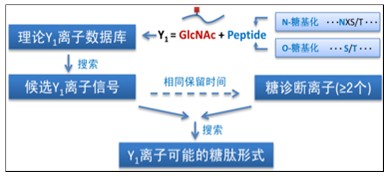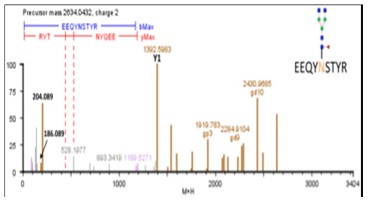The easiest glycopeptide identification - Introduction to PLGS, BiopharmaLynx glycopeptide analysis
Jia Wei
Waters Technology (Shanghai) Co., Ltd. Experimental Center
Glycosylated proteins are involved in almost all important life processes. The composition and structure of sugar chains have a huge impact on the conformation, function and interaction of other glycosylated proteins. Many protein drugs are glycosylated proteins such as immunoglobulin IgG. The research contents of protein glycosylation primary structure include: glycoform structure of sugar chain, amino acid site of glycosylation modification, and the corresponding relationship between the two. This information is concentrated in the glycopeptide structure. Waters PLGS BiopharmaLynx TM software and unique glycopeptide authentication function, which analyzes the process is as follows.
1. Establish Y1 ion theory database: Protein glycosylation mainly has N- and O-glycosylation. N-glycosylation is the attachment of a sugar chain to aspartic acid (N), and O-glycosylation is a linkage of a sugar chain to serine (S) or threonine (T). In the CID fragmentation of mass spectrometry, glycosidic bonds are more susceptible to cleavage than peptide bonds. In the N-, O-glycosylation, the first one linked to the amino acid is N-acetylglucosamine (GlcNAc). Therefore, in the fragments of the glycopeptide, the ion signal of the peptide-GlcNAc is stably present (and the Y1 ion). The first step in the glycopeptide search between PLGS and BiopharmaLynx is to build a theoretical Y1 ion database.
2. Discover the candidate Y1 ion signal: After the database is established, the Y1 ion mass spectrometry database is searched according to the mass accuracy, thereby finding the candidate Y1 ion signal.
3. Find the sugar diagnostic ion in the relevant fragment information of the candidate Y1 ion. If at least 2 sugar diagnostic ions are found, it is determined to be a glycopeptide and further processed. The sugar diagnostic ion is derived from the most common sugar residue type in the sugar chain. Here are seven sugar diagnostic ions: 204.0817, 188.017, 168.017, 274.0187, 292.0617, 368.1102, 657.1111.
4. Search for other candidate glycoform information and peptide sequence identification. Based on the mass search matching of Y1 ions, the possible sugar unit difference data was searched to find various glycoform structures of Y1 ions. Then, based on the b, y ion fragment of the peptide, information such as peptide sequence identification and glycosylation site determination. The identification function of glycopeptides by PLGS and BiopharmaLynx provides a very simple way to analyze the complex glycoform structure of protein drugs, and has become an indispensable tool in glycoprotein drug analysis.

Figure 1. Flow chart for glycopeptide identification.

Figure 2. Fragmentation analysis of the IgG glycopeptide EEQYNSTYR fragment.
The identification function of glycopeptides by PLGS and BiopharmaLynx provides a very simple way to analyze the complex glycoform structure of protein drugs, and has become an indispensable tool in glycoprotein drug analysis.
Smart Small Hand Lock,Indoor Apartment Lock,Safely Hotel Lock,Card Hotel Door Lock
ChangChun E-vida Technology Co.,ltd , https://www.evidatech.com